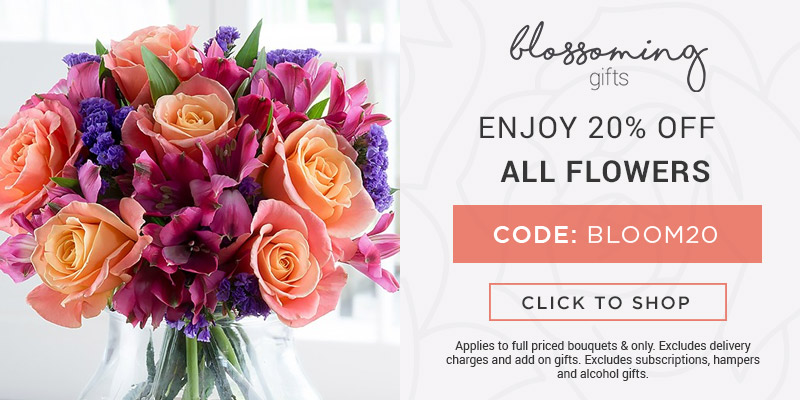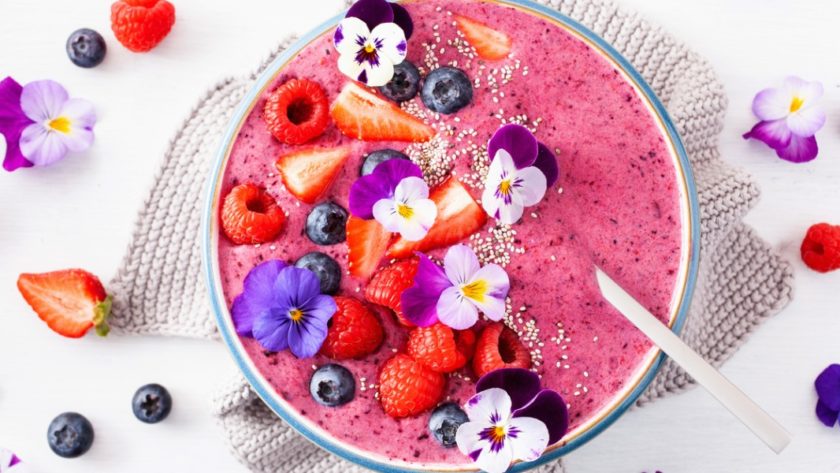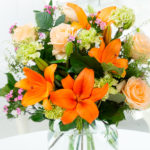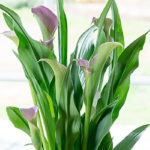Find out more about edible flowers, including what they are and what they taste like!
Flowers have been eaten throughout human history and they’re still used in recipes today. It can be a beautiful way to add colours and flavours to many varieties of dish. There are many kinds of edible flowers and each has their own flavour, scent and appearance.
Eating Flowers Safely
Not all flowers are safe to eat, and you should always take care when trying a flower for the first time. Here are our top tips for eating flowers safely:
- If you aren’t sure that a flower is edible, check a trusted source before having a nibble, as any part of it may be poisonous. Similarly, never garnish a dish with a non-edible flower purely for decorative purposes, as your guests may assume it can be eaten. For starters, hydrangeas, daffodils, bluebells and lily of the valley are no-gos.
- Remove the stamens and pistils where possible because the pollen they contain can spark allergic reactions.
- Don’t go overboard. Less is more when it comes to edible flowers, especially if your stomach is not used to them or you are prone to allergies. Try a small amount first to see how your body reacts.
- Steer clear of any flowers that have been treated with pesticides, as these may be harmful, and avoid picking those growing close to polluted roads. If you can grow your own patch of edible flowers organically at home, all the better. Regardless, always rinse your flowers with water before eating them to remove any dirt or bugs.
Take a look at our favourite edible flowers to try for baking, cooking, drinks, and more.
1. Allium
You’ve probably have already eaten many members of the allium family. From leeks and chives to garlic, many types of allium are edible and flavoursome and very commonly used in our kitchens today.
If you’re looking to get more adventurous, you can forage for allium too – wild garlic is one such variety. Many commonly eaten varieties produce edible flowers as well, including chives and garlic. The flowers are excellent as colourful, savoury garnishes.
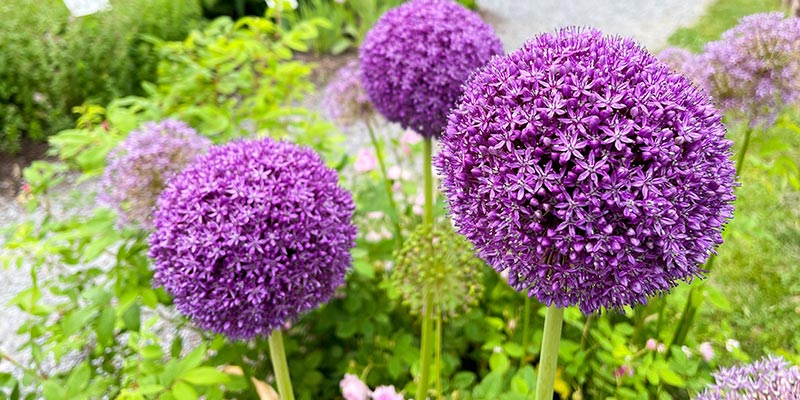
2. Angelica
A popular garden herb, angelica produces fanned clusters of delicate flowers. The blooms are most commonly white or green, but some varieties can be burgundy, purple, pink, or yellow.
All parts of the plant are edible (in fact, they’re part of the same family as carrots and celery!). The stems can be boiled and used as garnishes, or sweetened for desserts. The leaves can be scattered over salads. The seeds and roots are the real gold mine here though – they taste like liquorice, so you can use grind them down to use as a spice for dishes, or even to infuse drinks.
3. Arugula (Rocket)
You’ve probably already eaten rocket plenty of times, but did you know that the flowers are edible too? The plant produces small white flowers with dark centres, and like the leaves they have a peppery flavour. Use them to glam up your next salad!
4. Bee Balm (Bergamot)
Given the name, it’s unsurprising that bees love this flower – but it can be tasty treat for people as well! Steep the petals for a delicious herbal tea with a slightly minty flavour. Plus, bee balm has some great medicinal properties too – it can help to aid digestion, as well as relieve anxiety and stress.
5. Borage
The flowers and leaves are the winners here – they taste like cucumber! The dainty blue flowers look lovely as garnishes for flowers and cocktails, whilst the leaves can be ground up to make teas, cooked in soups, or sprinkled over salads. Dried leaves tend to lose their flavour, so it’s best to wash them and eat them fresh.
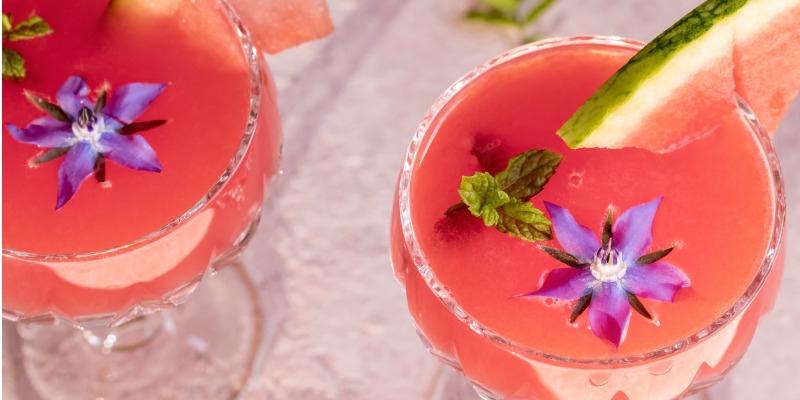
6. Calendula (Pot Marigold)
These bright golden flowers have a tangy and peppery flavour, and the petals are in fact the most flavoursome part of the plant. They’re often used as a cheaper alternative to saffron!
Calendula petals are excellent in salads, or you can use them as garnish in desserts and other dishes. You can also steep them to make super healthy and tasty teas. The petals have excellent anti-inflammatory properties, and can aid digestion, soothe sore throats, and relieve symptoms of PMS.
7. Carnations
This popular and beautiful flower needs no introduction. Carnation petals are edible, and bring a sweet and peppery flavour to dishes. Candy them to add some floral flair to desserts, or sprinkle them over salads for a splash of colour. You can even mix them into wines and liqueurs. Make sure to cut away the white base of the flower though, as it’s very bitter.
8. Chamomile
These tiny daisy-like flowers have a mellow, slightly apple-like flavour and are most popularly used in teas. Chamomile tea is well loved for its calming and soothing effects; a cup before bed can be just the thing for a good night’s sleep. It’s also full of antioxidants, meaning it has a whole host of other benefits for your health.
The flowers can also be used to flavour jams, desserts, and liqueurs, or even infused in salad dressings and oil. The leaves are safe to eat as well, and like the petals can be used in tea, or added to salads.
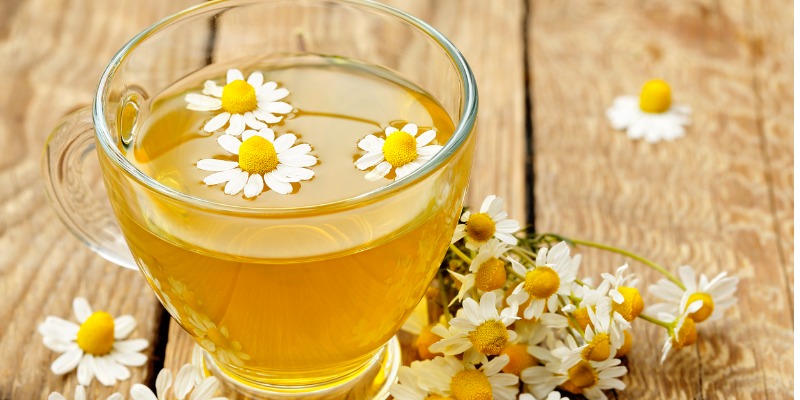
9. Chrysanthemum
Another popular bloom here at Blossoming Gifts! Chrysanthemums are safe to eat, with the flavour varying depending on the variety. Some types have a sweet floral flavour, whilst others are more bitter and peppery. The petals can be steeped in water to make teas, used as savoury garnishes, or even fried in oil for a tasty addition to your next stir fry.
The leaves and stems are also edible, and have a mild, grassy flavour. Add the fresh greens to salads, or cook them in stir fries, stews, and soups.
10. Clover
One for foragers! Clover is common throughout the UK, and all parts of the plant are safe to eat. The flowers are sweet and are great in salads. The leaves can be eaten but can cause bloating if they’re not cooked, and the taste isn’t worth it.
11. Dandelion
Another common wildflower, the dandelion has a wide range of culinary uses. Dandelions are a forager’s dream, as no part of the plant goes to waste. The flowers have a sweet, honey-like flavour and you can make dandelion wine from them (it tastes similar to mead). Dandelion leaves have a slightly earthy flavour similar to rocket or spinach. They can be used in place of other salad leaves, sautéed, or cooked into meals. Even the roots can be used – they can be boiled and eaten, or even roasted and made into a coffee substitute.
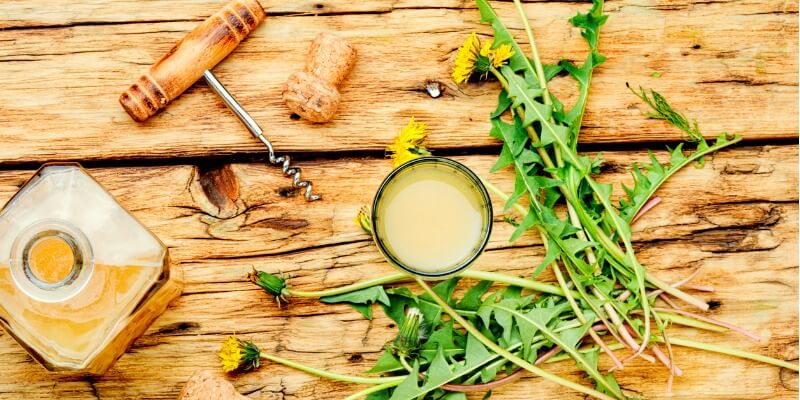
12. Dill
You’re probably more familiar with using this herb’s leaves, but the yellow flowers are also edible and have a very similar taste. You can also harvest leaves from dried flowers to use as a spice.
13. English Daisy
The flowers of English daisies aren’t a crowd-pleaser in terms of flavour, as they can be a bit acrid. However, they do look charming as garnishes and they’re perfectly safe to eat.
14. Fuchsia
Fuchsia flowers are tart and tangy, and their bright colours make a beautiful garnish. The berries are also edible and are great in jams and jellies.
15. Hibiscus
Hibiscus flowers can be eaten fresh, but their most famous use is definitely in tea! The flavour is tart and a bit sour – it’s often compared to cranberries. It’s excellent both hot, and as a refreshing iced tea in the summer. Drinking hibiscus tea can actually help to lower your blood pressure too.
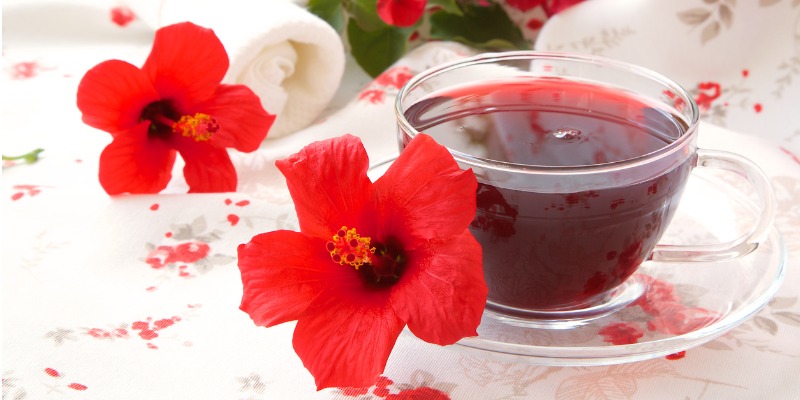
16. Lavender
Lavender’s only got more popular as an ingredient in recent years. The pretty purple flowers have a very sweet, floral flavour (although some people do find it a bit soapy!) It’s great in herbal teas to help you sleep better, or you can use the flowers as garnishes for desserts and cocktails. If you’re up for some creative baking, you can even make lavender-infused sugars and buttercreams for your cakes.
17. Lemon Verbena
Just like its name suggests, lemon verbena has an aromatic, citrusy flavour. The herb smells like sherbet lemons, and you can recognise it both by its distinctive scent and its dainty pink flowers. Both the leaves and flowers are incredibly versatile, and there’s plenty of ways to use them. Steep the leaves and flowers in hot water for a delicious tea that’s a great home remedy for colds. You can also use lemon verbena to season savoury dishes (it’s great with fish), or infuse it in water to make a delicious syrups and liquors for cakes and ice creams.
18. Lilac
These gloriously fragrant spring blooms taste just as good as they smell! They have a sweet and floral flavour with a citrusy finish that’s irresistible in desserts. You can make lilac-infused syrups and sugars that are perfect for all your baking needs, or you can steep the blooms in water for a dreamy floral tea. The delicate purple flowers are very pretty as well, so for something simpler you can use them as decorations for cocktails and desserts.
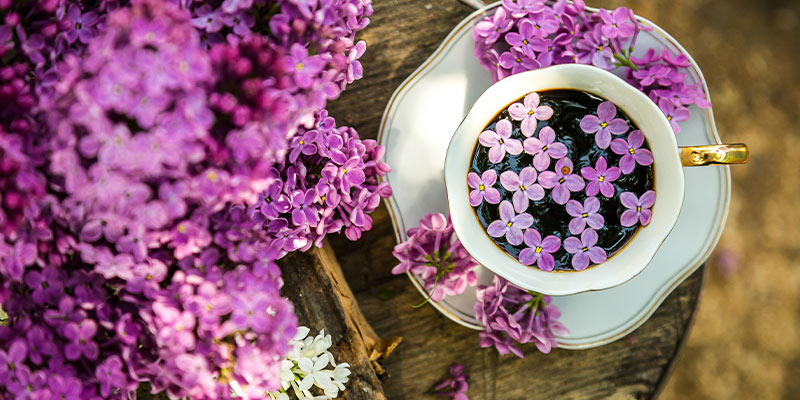
19. Nasturtium
One of the most popular edible flowers, nasturtium blossoms are brilliantly coloured with a sweet, floral flavour bursting with a spicy pepper finish. When the flowers go to seed, the seed pod is a marvel of sweet and spicy. You can stuff flowers, add leaves to salads, pickle buds like capers, and garnish to your heart’s content.
20. Pansy
These bright and colourful garden favourites are simply stunning as garnishes, or they can be candied and added to cakes. The taste is very mild and fresh (a bit like lettuce), so they serve better as decorations than seasoning.
21. Rose
All roses are edible, with the flavour more pronounced in darker varieties. Remove the white, bitter base and the remaining petals have a sweet, perfumed flavour perfect for floating in drinks, scattering across desserts, or infusing in jams and honeys. You can also use them in spice mixes to add some floral flavour to savoury dishes. As with many other flowers, rose tea is also a delicious option!
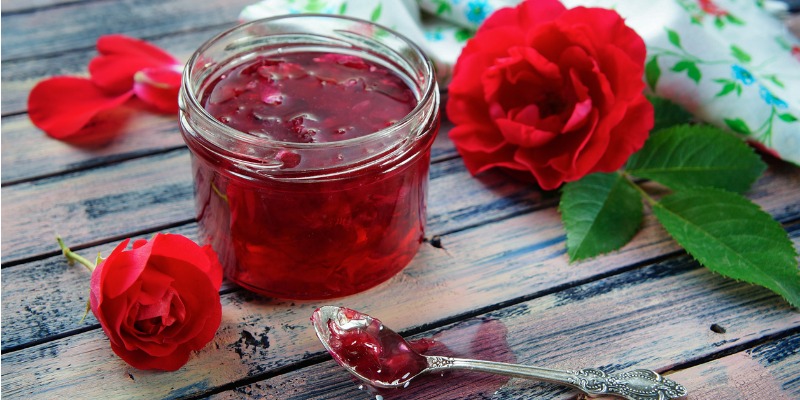
22. Sunflower
Sunflower seeds are a common and tasty snack, but did you know that all parts of sunflowers are edible? In fact, sunflowers may be one of the oldest cultivated crops in North America! The buds can be steamed like artichokes, and the leaves can used fresh in salads, or cooked and used as an alternative to other greens in your favourite recipes. The petals themselves are nutty and a tad bitter, and can be sprinkled over salads for a summery garnish, or steeped to make teas (add a dash of honey if it’s too bitter for your tastes).
23. Violets
Another famous edible flower, violets are floral, sweet and beautiful as garnishes. They’ve been used in food for centuries; violet wine was a popular drink in Ancient Rome and Greece, and one of the earliest sweets in Victorian times was made using violet petals. Parma violets are also based on the taste of violets, although the current recipe doesn’t actually contain the flowers.
Use the fresh flowers to add a splash of colour to salads, desserts and drinks. For a more pronounced flavour, brew the flowers in tea, or infuse them to make deliciously sweet syrups. Just don’t eat the roots or seeds of violets – these can make you feel ill.
Experimenting with flowers in the kitchen is fun, but if you just want to brighten up your home with a gorgeous bouquet we’ve got you covered. Explore our beautiful selection of flowers and find the perfect gift today.
